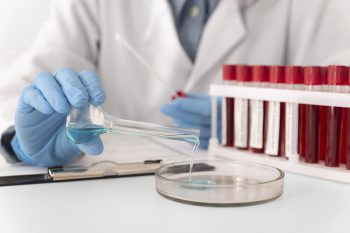is the branch of medicine that focuses on the study of blood, blood-forming organs, and blood diseases. Hematologists are medical specialists who diagnose, treat, and manage disorders related to blood and its components, including red blood cells, white blood cells, platelets, bone marrow, lymph nodes, and the coagulation system. Here’s a detailed overview of hematology, common diagnostic procedures, and tips on how to stay healthy:
A haematologist is a physician who:
- Diagnoses Blood Disorders: Identifies diseases and conditions related to blood, such as anemia, leukemia, lymphoma, clotting disorders, and hemophilia.
- Treats Blood Diseases: Provides medical treatment for blood disorders, which may include medications, chemotherapy, blood transfusions, and bone marrow transplants.
- Manages Chronic Conditions: Offers ongoing care and monitoring for patients with chronic blood disorders.
- Conducts Research: Participates in clinical research to develop new treatments and improve existing therapies for blood diseases.

Diagnostic Procedures
- Complete Blood Count (CBC):
- Purpose: A CBC measures the levels of red blood cells, white blood cells, hemoglobin, hematocrit, and platelets. It helps diagnose anemia, infections, and many other hematological conditions.
- Procedure: Blood is drawn from a vein, typically in the arm, and analyzed in a laboratory.
- Peripheral Blood Smear:
- Purpose: Examines the size, shape, and appearance of blood cells under a microscope. It is useful for diagnosing blood disorders such as leukemia, sickle cell anemia, and other abnormalities.
- Procedure: A drop of blood is spread on a microscope slide, stained, and examined by a pathologist.
- Bone Marrow Aspiration and Biopsy:
- Purpose: Evaluates bone marrow function and helps diagnose conditions such as leukemia, lymphoma, multiple myeloma, and aplastic anemia.
- Procedure: A small amount of bone marrow is removed from the hip bone or sternum using a needle, typically under local anesthesia.
- Coagulation Tests:
- Purpose: Assess the blood’s ability to clot. Common tests include prothrombin time (PT), activated partial thromboplastin time (aPTT), and international normalized ratio (INR).
- Procedure: Blood is drawn and tested in a laboratory to measure clotting time and function.
- Flow Cytometry:
- Purpose: Analyzes the physical and chemical characteristics of cells or particles in a fluid as they pass through a laser. It is used to diagnose types of leukemia and lymphoma.
- Procedure: A blood, bone marrow, or tissue sample is treated with special dyes and passed through the flow cytometer.
- Molecular and Genetic Testing:
- Purpose: Identifies genetic mutations and abnormalities associated with blood disorders. Tests may include polymerase chain reaction (PCR), next-generation sequencing (NGS), and fluorescence in situ hybridization (FISH).
- Procedure: Blood or bone marrow samples are collected and analyzed in a specialized laboratory.
Common Blood Disorders
- Anemia: A condition characterized by a deficiency of red blood cells or hemoglobin, leading to fatigue, weakness, and pallor.
- Leukemia: A type of cancer that affects the blood and bone marrow, characterized by the overproduction of abnormal white blood cells.
- Lymphoma: A cancer of the lymphatic system, which includes lymph nodes, spleen, and bone marrow.
- Hemophilia: A genetic disorder that impairs the blood’s ability to clot, leading to excessive bleeding.
- Thrombocytopenia: A condition characterized by a low platelet count, increasing the risk of bleeding and bruising.
- Sickle Cell Disease: A genetic disorder that causes red blood cells to become misshapen and break down.
Tips for Heart Health
Balanced Diet: Eat a diet rich in fruits, vegetables, lean proteins, and whole grains. Ensure adequate intake of iron, vitamin B12, and folate to support healthy blood production.
Regular Exercise: Engage in regular physical activity to maintain cardiovascular health and improve circulation.
Stay Hydrated: Drink plenty of water to help maintain blood volume and circulation.
Avoid Smoking and Limit Alcohol: Smoking and excessive alcohol consumption can negatively impact blood health and increase the risk of blood disorders.
Regular Check-ups: Visit your healthcare provider regularly for check-ups and blood tests to monitor your overall health and detect any potential issues early.
Manage Stress: Practice stress management techniques such as yoga, meditation, or deep breathing exercises to support overall health and well-being.
Prevent Infections: Follow good hygiene practices, stay up-to-date with vaccinations, and avoid exposure to infections, which can affect blood health.
Know Your Family History: Be aware of your family medical history, as some blood disorders can be inherited. Inform your healthcare provider about any family history of blood diseases.


